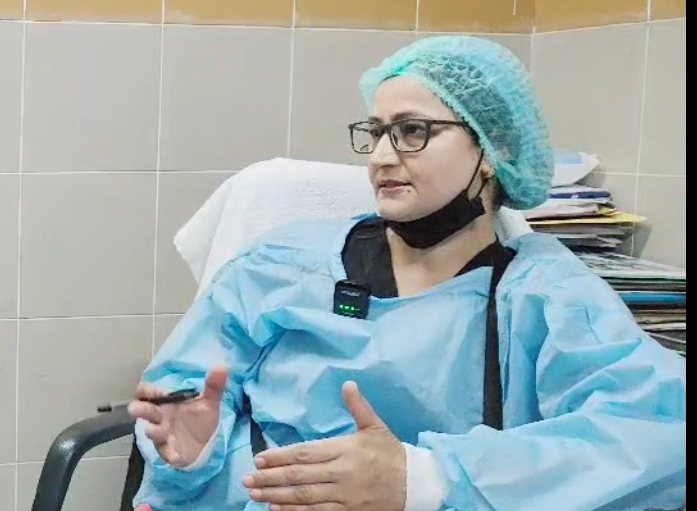By:. Parvez ud Din
Srinagar: In an alarming development concerning women’s health, ovarian cancer cases among young women are on the rise in Kashmir, a leading oncologist has warned.
In a special conversation, Dr. Shamima Wani, Professor and Head of the Department of Oncology at GMC Srinagar, discussed the increasing trend of ovarian cancer among young women in Kashmir, the contributing factors, and available treatment options.
Dr. Shamima explained that ovarian cancer begins with the formation of small cysts in one or both ovaries, which can later turn cancerous.
“However, not every cyst is cancerous. Ovarian cancer arises from the uncontrolled division of ovarian cells, which, if left untreated, can spread to surrounding tissues. There are three types of ovarian cancer: epithelial ovarian cancer, germ cell tumors, and stromal cell tumors,” she noted.
She stated that the number of ovarian cancer cases has significantly increased in the Kashmir Valley over the last few years. “Compared to breast cancer and other cancers, we are now seeing a higher number of ovarian cancer cases in women here,” she said.
“Seventy percent of the patients admitted to the oncology department at GMC Srinagar are affected by ovarian cancer. Our data show that ovarian cancer cases are rising even more rapidly than breast cancer,” she added.
Dr. Shamima highlighted that while ovarian cancer was traditionally seen in women above 50, it is now being diagnosed in women aged 30 to 40 as well.
“Epithelial ovarian cancer, once common only among elderly women, is no longer confined to a particular age group,” she said.
Regarding the causes, Dr. Shamima cited multiple factors, including late marriages, obesity, delayed or no childbearing, changes in diet and lifestyle, and the use of certain hormonal drugs.
“In addition, the continuous formation of eggs in the ovaries—without breaks such as pregnancy—can negatively impact the ovaries and increase cancer risk,” she explained.
Speaking specifically about younger and unmarried girls, she attributed the risk to lifestyle and dietary changes, particularly the presence of pesticides in vegetables and fruits.
On treatment, Dr. Shamima said that 80 percent of ovarian cancer patients are diagnosed at stage three, while only 20 percent are diagnosed at stages one or two.
“Complete treatment is only possible in stages one and two. While treatment at stage three is not always fully successful, about 70 percent of patients can still be treated. However, there is no guarantee the cancer will not return,” she cautioned.
She added that along with breast cancer, ovarian cancer cases are rising across Jammu and Kashmir, particularly in the Kashmir Valley, with a growing number of younger women being affected.
According to medical experts, the region has seen a notable increase in gynecological cancers in recent years compared to other states and Union Territories in the country.
Ovaries are an essential part of the female reproductive system. Located on either side of the uterus, they contain ova (eggs) released during each menstrual cycle. They also produce the female hormones estrogen and progesterone, playing a vital role in both reproduction and hormonal balance.




